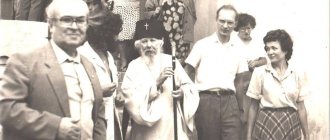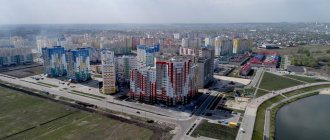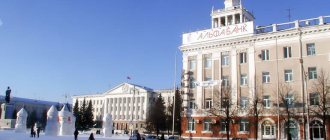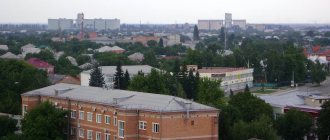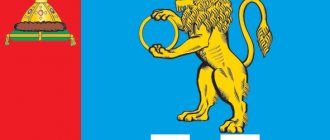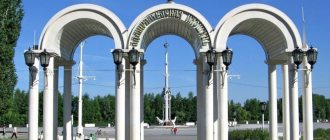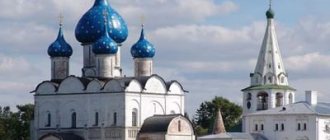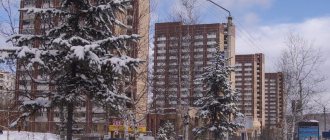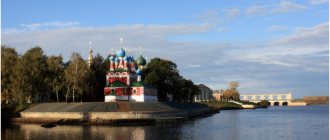It’s deep night for residents of central Russia, and residents of Khabarovsk are already rushing to work. The city is located 30 kilometers from the border with China, a different time zone, by which one can judge how far the administrative center of the Far Eastern District and Khabarovsk Territory is located from the capital of the Russian Federation - 8 thousand kilometers. If you are ready to spend more than eight hours in the air and the same number of days traveling by rail, enjoy your acquaintance with the large Far Eastern center!
History of the city of Khabarovsk
The name of the city Khabarovsk is associated with the name of the explorer Khabarov, a former peasant. Erofey Khabarov heard rumors about the wealth of Daurova land (Amur region), and he set off to look for untold riches following the expedition of Vasily Poyarkov. Desperate explorers discovered a short route to the Amur, gathered a small detachment and set off along the Urka River, down to the Amur. Nowadays the Erofey Pavlovich railway station is located here.
Their deserted cities were greeted by appanage princes who, having heard about the campaign of the conquerors, hastily left the inhabited areas. The expedition continued for several years, many died in battles with Manchu troops. Khabarov himself, although he settled Dauria with Russian people, fell into disgrace with the tsar and was placed in the Yakut prison. But the border post on the banks of the conquered Amur, near the Chinese border, received the name Khabarovka a century later.
At the end of the 19th century, the city of Khabarovsk became the center of the Primorsky region. In Soviet times, it received the status of the capital of the Far Eastern Territory, and then of Khabarovsk. The population of the city at that time barely exceeded 50 thousand people.
The real flourishing of the region occurred in the middle of the last century: industry was created, trams appeared on the city streets, institutes, a theater, and the first museums began to operate.
In new history, the city is experiencing a rebirth in connection with the Russia-EU summit. Today Khabarovsk is the largest industrial, scientific and cultural center in the Far East, closely connected by sister cities with Japan, China, Korea, and Canada.
Project on the topic “My hometown is Khabarovsk” for 2nd grade
Goal of the project: As part of studying the subject “The World Around You,” talk about your hometown, its attractions and memorable places.
Find information about his story and share it with your classmates. Tell schoolchildren about Khabarovsk and why I love it. Prepare a report and presentation in the form of a photo story. Project plan:
- Location on the country map.
- History and symbols.
- Khabarovsk in the present.
- Attractions.
- Places of military glory.
- Conclusion.
- An example of a finished photo story-presentation.
Climate and ecology of Khabarovsk
Considering the proximity of the sea and several waterways in the city itself, the climate of Khabarovsk is sharply continental, somewhat similar to Siberian. In winter, the air is dry, the temperature stays between 20-25 degrees. Precipitation is rare, as in summer. But disasters happen: a flood in the summer of 2013 and unimaginable snowstorms in the winter of 2015. In winter there are rare days with temperatures of at least 40 degrees. But this is rather an exception; usually stable temperatures remain around minus 20.
Summer is moderately warm 20-25 degrees. The heat in the seaside city lasts no more than 3 weeks. The thermometer then shows 30-35 degrees. Townspeople rush to the sea, just like during the velvet season, which begins in late August and early September. Sea water warms up to 25 degrees.
Pleasant weather and relaxation are disrupted by the invasion of ticks and midges. This period in the Far East lasts from May to September.
The ecology does not cause any particular distress to the townspeople: the wind from the Amur does a grateful job of dispersing the smog. Only when there is no wind do citizens sometimes feel that the air in Khabarovsk is polluted. However, emissions from vehicles do not significantly exceed permissible MPC standards.
A constant source of air pollution is the city's thermal energy sources; three thermal power plants operate in the surrounding area. Residential areas located in close proximity to them are among the cheapest. But this is for the time being: Khabarovsk has adopted a municipal program for the environmental safety of nearby territories. It is hoped that powerful air purification filters will be installed to minimize the release of hazardous substances.
Monument to Khabarov
- Erofey Khabarov.
There is a legend that initially the monument was located so that Erofei’s back was facing the station, but the authorities considered this unsightly for visitors, so they turned it around. Actually this is not true. The monument always faced the station.
- A cap
Khabarovsk residents love to ask tourists the question of in which hand Erofei Khabarov, whose monument is erected next to the station, holds his hat. In fact, the question is tricky, because the hat is on his head. This is how Khabarovsk residents like to confuse tourists.
Population and labor market in Khabarovsk
At the beginning of 2015, the city's population was just over 600 thousand people. Over the last decade it has increased by 20 thousand citizens. The city fathers believe that the positive dynamics in the demographic situation of the city was achieved due to:
- the city's attractiveness for young families;
- construction of housing, kindergartens, schools and clinics;
- increasing the birth rate;
- reduction in mortality;
- high salaries and standard of living;
- increasing the flow of migrants.
Khabarovsk has a low unemployment rate. At the beginning of 2015, official data was 0.41 percent. Only 1,300 city residents are registered as unemployed, and the number of vacant jobs is approaching 10 thousand. Industrial enterprises require machine operators, turners, and mechanics. The employer is ready to pay highly skilled workers and engineers a salary that is significantly higher than the average for the regional center.
The employment center offers a large number of vacancies. Among them:
- tower crane operators;
- masons;
- finishers;
- foremen;
- drivers of heavy vehicles;
- bulldozer drivers;
- gas-electric welders;
- teachers;
- a kindergarten teacher;
- doctors;
- nurses;
- nurses;
- accountants;
- sellers.
The average salary in Khabarovsk is considered one of the highest in the region, over 35 thousand rubles. The fixed cost of the minimum basket is about 12 thousand rubles. As you can see, the standard of living in the capital of the region is quite high.
Who is Khabarovsk named after? History of the name
The name Khabarovka was given on the initiative of Count Muravyov-Amursky. The future capital of the Far Eastern region is named after Erofei Pavlovich Khabarov, a Russian explorer who explored Eastern Siberia and the Amur region in the 17th century. A favorable location for establishing a military post was recommended to Muravyov back in February 1854 by Gennady Ivanovich Nevelskoy. An expedition led by this outstanding naval officer in 1849 discovered the strait between Sakhalin Island and the mainland, and also established that the mouth of the Amur was navigable.
The names of these figures are immortalized in the sights of Khabarovsk. In 1958, for the centennial anniversary of the regional capital, a monument to Khabarov was erected on the station square. The central embankment in Khabarovsk is named after Nevelsky. A monument to the outstanding naval admiral and explorer of the Far East should appear in the regional capital in the near future.
Industry, investments, budget of Khabarovsk
The capital of the region is a large industrial center. The entire Far East supplies fuels and lubricants (gasoline, motor fuel), and oil refineries export them abroad. In the structure of the regional gross product, the energy complex occupies a dominant place; a third of the gross output falls on its share.
There are several shipbuilding factories in the city, united into a corporation. Military and civilian vessels, including submarines, are produced here. The factories successfully survived the crisis in 2010-2011 and received large government orders. Today there are several job vacancies open here. Branches of the shipbuilding college have been opened at the Kirov plant and the Khabarovsk shipyard, where additional training programs for blue-collar jobs have been opened.
Wood processing occupies third place in the structure of industrial enterprises. The city is home to the headquarters of the largest logging holding company.
Khabarovsk enterprises also produce:
- machine equipment;
- metal constructions;
- cables and conductors;
- heating equipment;
- diesel engines;
- cash registers;
- water meters;
- reinforced concrete wall panels;
- brick;
- clothes;
- candies;
- medications;
- dressings;
- fish delicacies;
- liquor products.
There are artels for the extraction of minerals, non-metallic materials, gold and platinum.
Defense orders from aircraft manufacturing enterprises more than doubled in 2014. In the shipbuilding industry one and a half times.
Due to its geographical location, the city attracts a large amount of foreign investment. Primarily from China. The largest Russian companies are investing in the development of logging and wood processing. An investment program for the construction of housing, other capital construction projects, and commercial real estate has been in effect for more than ten years.
Investments in fixed capital of the region's industrial complex in 2014 increased one and a half times and exceeded 2.5 billion rubles.
Budget revenues in 2015 are planned in the amount of 12.6 billion rubles. The third part of the city treasury income is the personal income tax. Two-thirds of budget expenditures go to the implementation of social programs to improve the quality of life of citizens. As an anti-crisis measure, officials' salaries will be reduced by 10 percent in 2015.
Visit of Tsarevich Nicholas to Khabarovka
The history of Khabarovsk remembers Tsarevich Nikolai Alexandrovich - the future Emperor of All Russia. He sailed from Vladivostok along the Ussuri on the steamship Vestnik and on June 10, 1891, set foot on the Khabarovsk pier. To the sound of bells ringing from the Assumption Cathedral and a loud “Hurray!” the heir to the throne walked down the stairs. On the shore, he was met with traditional bread and salt by the city elder S.I. Balakhovich, surrounded by “officials of the military and civil administration.”
Khabarovka meets the Tsarevich
Nicholas walked along the elegant embankment, rose through the triumphal gates to Cathedral Square and entered the Assumption Cathedral. Then he proceeded to the residence of the Amur Governor-General of Korf, from where he greeted Khabarovsk residents from the balcony.
The next day at 10 am, Nikolai participated in the opening ceremony of the monument to Count Muravyov-Amursky on the Khabarovsk cliff. Then the Tsarevich inspected the city, school, artillery workshops and the Amur department of the Imperial Russian Geographical Society. As in Vladivostok, Nikolai donated money to institutions and awarded employees with valuable gifts.
During his visit, Nikolai noted that it would be nice to open a public library in the city. When it appeared 3 years later, Emperor Nicholas II, who had already ascended the throne, sent 453 books from his personal library to Khabarovsk.
Housing market and new buildings
The housing issue for city residents does not lose its urgency: little is being built, and the price per square meter is truly golden. In the Russian ranking of cities in terms of housing costs, Khabarovsk occupies an honorable third place, behind only two capitals, the average price per square meter is over 72 thousand rubles. Real estate here is more expensive than in Sochi and the Leningrad region. This is explained by the following factors:
- slowdown in construction rates;
- lack of vacant land plots;
- expensive building materials produced in the region;
- high cost of technological connections (electricity, gas, water).
The government of the regional capital has developed a number of targeted programs aimed at increasing construction volumes, reducing the cost of housing for developers, and the availability of utility networks. By 2022, officials promised to reduce prices by 20 percent and increase the volume of housing commissioning to 1.3 million square meters, three times more than in 2014. The authorities will annually allocate 250 hectares of land for these purposes.
In the meantime, the situation on the housing market is very tense. Half of the city's population needs improved housing conditions. But 80 percent of new housing is in the elite category. Less than 10 percent of Khabarovsk residents are able to purchase such expensive housing.
In the Central district of the city, the cost per square meter in a brick high-rise building is in the range of 115-125 thousand rubles. This area cannot be classified as densely populated, with just over 90 thousand people living there.
But in the Industrial district of the regional capital, the population exceeds 200 thousand people, taking into account the adjacent satellites Ilyinka, Krasnorechenskoye, Sosnovka, Ussuriysky. The area stretches along the Amur Channel, is very picturesque, including dozens of microdistricts and residential complexes:
- Southern;
- Red River;
- Builder;
- Crown;
- Flegontova;
- Coastal;
- Fifth platform.
Here you can buy housing from 75 thousand rubles per square meter in a new building. The infrastructure is well developed, transport links include trams, trolleybuses, and buses.
On the border of the Central and Industrial districts, the Golden Keys residential complex was built with 360 new open-plan apartments, with underground parking for 100 cars. The cost per square meter is from 73 to 90 thousand rubles per square.
The Zheleznodorozhny district, located in the eastern part of the city, is also densely populated; more than 150 thousand people live in the following microdistricts:
- New;
- Manor;
- Air City;
- Sunny Polyana;
- Big Dipper;
- Vyborg.
In the area there is the tallest building in the city, the New Quarter, 107 meters, 32 floors. But the hotel building being built nearby is planned to consist of high-rise buildings above 150 meters and 53 floors.
The area is built up with high-rise buildings from 10 to 26 floors. Dozens of the largest shopping centers are concentrated here, and the largest market in the Far East, Vyborg, is located. By the way, the city has a large number of small markets where you can cheaply buy Chinese goods and fish delicacies that you will not find anywhere else except Khabarovsk.
In the Zheleznodorozhny district you can find housing from 55 thousand rubles per square meter in the old housing stock. Such apartments belong to economy class. The construction of the Sozvezdie housing complex has begun - two 25-storey buildings with 300 apartments. At the construction stage, you can conclude an agreement to purchase apartments for 72-84 thousand rubles per square meter. The complex is being built using Korean technologies.
The Krasnoflotsky district of the Capital is an administrative, cultural, commercial and historical center. You can buy a two-room apartment with a view of the Amur for 2.7 million rubles (50 square meters). Nearby they offer to buy a 14-meter room in a communal apartment for 1.45 million rubles. Housing in this area is the cheapest in the city, located in old housing stock.
Only 50 thousand people live in the Kirovsky district, the right bank part of the city. There is an oil refinery, a river port, and a thermal power plant here. The ecology of this part of the city leaves much to be desired. Apartments even in Brezhnevka are expensive: from 80 thousand rubles per square meter.
Low-rise construction is underway in the outskirts of the city. Noteworthy is the well-maintained Sunny City complex, a 10-minute drive from the center. There is a large park area on its territory. The territory is guarded around the clock, entry is through a checkpoint. There are shops, a kindergarten, convenient parking, and sports grounds. Round price per square meter: 100 thousand rubles.
The Aurora cottage community is located in picturesque surroundings, in a forested area, a kilometer from the airport. Apartments from 140 to 170 square meters, with a land plot of 4 acres. The houses are under construction. At this stage, you can purchase housing from the developer for 48 thousand rubles per square meter. This is the best offer on the city housing market.
Reasonable prices and comfortable living conditions can be found in other cottage villages:
- Everest;
- Aviacity;
- Matveevka;
- Estate.
They are located in environmentally friendly places, away from city noise.
Distinctive features of modern Khabarovsk
- The Transfiguration Cathedral , built in 2012, is the third largest in Russia.
- Its park from the station to the center is filled with figurines of zodiac signs, in which one can see almost “jewelry” work.
- The light and music fountain complex , located in the center on the ponds, is one of the largest in the Russian Federation.
- , 3 thousand liters of fish soup were prepared according to the governor’s recipe, which was fed to 15 thousand people, and when moving into a new residential complex, they unanimously celebrated the housewarming of more than 2 thousand people in the courtyard with a cauldron of pilaf and fireworks.
- Khabarovsk residents' vacation lasts 36 days .
- According to statistics, there are 260 cars in the Khabarovsk Territory. per 1 thousand inhabitants , but even this proportion does not prevent the formation of traffic jams and problems with parking.
- It can be called a popular tradition for many families to visit the nearest Chinese cities on weekends for relaxation , drink local beer, and go to the bathhouse. There is a visa-free regime with some Chinese cities.
- Products in Khabarovsk are more expensive than in central Russia.
- Quite expensive real estate and housing and communal services.
- In 2022, the city was included in the top 15 most popular cities in the Russian Federation among foreign tourists.
- The petroglyphs are of great interest ; the impressive sight has never left anyone indifferent.
- On July 5, 2022, a ceremonial meeting of the millionth passenger .
- The city is undergoing reconstruction and construction of new complexes is planned. Thus, the embankment from the yacht club to the swimming pool is planned to be reconstructed by the end of 2022. Construction of a universal stadium has begun in the suburbs, and it is planned to build a terminal with an exhibition center and a training center for Olympic athletes. Work has begun on the gigantic ring road project.
- Despite all the achievements and transformations in recent times, the city has the oldest transport fleet in the country , and trams dating back to 1978 are still running on it.
The city of frost and sun, of unusually contrasting nature and originality, is taking on a new shape, which complements and emphasizes its uniqueness and peculiar grace.
Sights and culture
The architecture of the city on the Amur combines ancient low buildings and new buildings reaching into the sky. This can already be seen on the main street of the city of Muravyov Amursky, which bears the name of the Governor-General of Eastern Siberia. Along it you can walk to the central Lenin Square, second in size only to Red Square. In summer it is surrounded by greenery, flowers, and decorated with fountains.
The youngest square in the city is named after Victory. On the high bank of the Amur, pylons with the names of heroes were installed, and the Eternal Flame was lit.
A river bus along the Amur leaves from the central park, from which a magnificent view of the city opens. The park also has an observation deck on a cliff, from which you can admire the majestic river and go down to it along the steps of the embankment.
We recommend taking a walk along the new bridge, which is called the Amur Miracle: the length is more than 2.5 kilometers, the height is 64 meters. On the lower tier there are railway tracks, above there is a two-lane highway, and there are pedestrian paths. The Amur Bridge has its own museum, which is interesting to visit.
The city has many park areas, public gardens, and green spaces. In the center there is an arboretum, where plants of the Ussuri taiga, Tien Shan, and Himalayas are presented on 11 hectares. Exotic species of birch grow here:
- stone;
- iron;
- black;
- flat-leaved.
Orthodox shrines are represented by the Church of St. Innocent of Irkutsk and the Holy Transfiguration Cathedral, which in size is second only to St. Isaac's Cathedral and the Cathedral of Christ the Savior. Its height is 95 meters.
At the Far Eastern Art Museum you can admire the masterpieces of Russian Itinerant artists and get acquainted with modern art.
The history of the city will come to life before your eyes in the N. Grodekov Local Lore Museum and the History Museum. Children will be interested in visiting the aquarium museum, where about a hundred species of fish living in the Amur and its basin are presented.
The Drama Theatre, the Musical Comedy Theater and the Triad Pantomime Theater are popular among city residents. If you stay in the city on the Amur for several days, you can visit numerous cinemas, exhibition halls, cultural entertainment and sports centers.
Class hour for 4th grade students. Khabarovsk - the city of military glory
Class hour: “Khabarovsk is a city of military glory”
Explanatory note: The most important component of the educational process in a modern Russian school is the formation of patriotism and citizenship.
These qualities include the need to faithfully serve one’s Motherland, the manifestation of love and loyalty in it, the awareness and experience of its greatness and glory, the desire to protect its honor and dignity, and strengthen its power and independence through practical deeds. The formation of patriotism and citizenship must begin with the cultivation of love for the small Motherland, with attachment to the places where a person was born and raised, with the development of a sustainable cognitive interest in the past and present of our Motherland. Thematic class hour “Khabarovsk - the city of military glory”
It was held within the framework of the civil patriotic action
“Roads of Military Glory” . Form of delivery: integrated lesson using information and communication technologies. The first part of the lesson is theoretical, where students, working in groups, learn about the participation of Khabarovsk residents in military events of different periods: the civil war and military intervention, the Great Patriotic War, the war with Japan, local wars, as well as the school’s contributions in awarding the city the title “City” military glory." At this stage, tools such as an interactive whiteboard, Poly Vision, a multimedia projector, and a PC are used to demonstrate clarity (on the slides of a presentation created by the teacher). The second part of the lesson is practical . During the practical part, the groups presented the results of their activities in the form of presentations, creative reports and speeches, “combat sheets”, “timelines”. Goal: to form students’ ideas about Khabarovsk as a city of military glory in Russia.
Universal educational activities:
Subject-specific: to form students’ idea of Khabarovsk as a city of military glory. Meta-subject: to promote the development of cognitive interest of students; Create conditions for the development of all types of information perception. Personal: develop moral and personal qualities: love for your small Motherland, a sense of patriotism and pride in the historical past of your people, a sense of tolerance; improve collaboration skills; improve your speaking skills in front of an audience. Objectives: - to create a sense of respect for the heroic past of our homeland; - to form such important concepts as “duty to the Motherland”, “love for the Fatherland”, “feat”; - develop a sense of pride in the land on which you live, preserving the memory of the exploits of the defenders of the Fatherland; - cultivate love and respect for your city, for your native land; - intensify interest in studying the history of the Fatherland. Age of children: 13 – 15 years. Venue : museum or history room. Requisites: Whatman paper, markers, glue, handouts. Equipment: • computer for the teacher, • laptops for students with Internet access, • projector, • interactive whiteboard, • scientific and journalistic literature. Class progress: 1 . The anthem sounds, a solemn fanfare. 2 . Introduction. 3 . Work in groups according to areas. 4 . A minute of silence. 5 . Project protection. 6. Speech by the “Press Center” group. 7 . Summarizing. Class teacher: Good afternoon, dear friends! The Federal Law of the Russian Federation dated May 9, 2006, in Article No. 1 states that the title “City of Military Glory” is awarded to cities on whose territory fierce battles took place with heavy losses; courage, perseverance and bravery, and mass heroism of soldiers; the presence of a strategic front-line operation, the coverage area of which includes the given city; decisive influence on the outcome of military operations; On November 3, 2012, by Decree of the President of the Russian Federation “for the courage, fortitude and mass heroism shown by the city’s defenders in the struggle for the freedom and independence of the Fatherland,” Khabarovsk was awarded the honorary title “City of Military Glory!” Living in such a beautiful city as Khabarovsk, studying its history and knowing about the courage of the townspeople, we have to figure out why the city of Khabarovsk was awarded the title “City of Military Glory.” Khabarovsk residents steadfastly survived and with courage endured all the hardships of the Civil War, foreign intervention and the Great Patriotic War. The history of the exploits and heroism of the city residents in those difficult years will forever remain in our memory. This means that “the glory will not cease these days.” We called the class hour dedicated to conferring the title of military glory on the city of Khabarovsk “Khabarovsk - the city of military glory.” A lot of preparatory work was done for the class hour: we learned poems, selected material for the lesson in groups, and talked with parents and grandparents. During the preparation period, a search for information was carried out in one of the areas: the years of the Civil War and military intervention, the heroism of Khabarovsk residents on the fronts of the Great Patriotic War and in the war with Japan, in local wars (Afghanistan, the North Caucasus and other “hot spots”). A special role is given to the press center group, whose task is to summarize the results of the class hour in a creative form. Within 15 minutes, each group needs to systematize the collected material and present it. For defense, I propose the following forms of work: “Combat sheet”, presentation, creative performance, “timeline”. Handouts are provided on the tables; you can supplement your project with this information, and there are also laptops with Internet access. Work in groups (15 – 20 minutes). At this time, the class teacher is recommended to work with the press center and help groups if necessary. Class teacher: Guys, we are finishing our work in groups. Time is up. Let's start protecting projects. From the first days of its formation, Khabarovsk was a historical outpost of the country in the Far East and is inextricably linked with the military history of the country and the defense of its Far Eastern borders. The floor is given to the first group. Performance of the 1st group.
Civil war and military intervention
Expected answers from children: During the years of the civil war and foreign military intervention, Khabarovsk was a front-line city, the center of military operations and the people's liberation struggle for freedom and independence.
White atamans in Khabarovsk. Civil War.
Demonstration performances of the Cossacks during the Civil War This is what the main street was like during the Civil War During the Civil War
Civil war in the Far East City during the civil war
The Far Eastern Council of People's Commissars, the Headquarters of the Red Army and the Red Guard were located in Khabarovsk. From here combat detachments were sent to Transbaikalia, Blagoveshchensk, and the Ussuri Front. They showed the greatest examples of heroism in the liberation of Khabarovsk from the invaders. The Volochaev operation is the heroic struggle of our compatriots for Khabarovsk as an important military and political center of the Far East. The Battle of Volochaevo Near Kazakevichevo, gangs of White rebels were defeated. Guerrilla detachments at the Volochaevka station destroyed the main forces of the White rebels and the Japanese interventionists supporting them, and liberated the left bank of the Amur and the city of Khabarovsk. Armed conflict on the CER. The heroic efforts of the border guards and ships of the Amur flotilla prevented the invasion of foreign troops from China into Soviet territory. The Amur flotilla was awarded the Order of the Red Banner. Local war near Lake Khasan.
Japanese inspect a captured Russian tank
Combat operations near Lake Khasan In Khabarovsk, a rear hospital base of the front was deployed, which performed an important task. Conflict on the Khalkhin River - Gol. During the fierce battles, the border guards inflicted significant losses on the Japanese-White Guard landing forces and forced them to leave the island. Class teacher: During the Great Patriotic War, Khabarovsk residents passed the severe exam with honor. In the shortest possible time, industry and transport were transferred to a war footing and provided for the needs of the front. I would like to begin the performance of the second group with the words of the great Far Eastern poet - Pyotr Komarov: Russia! May he be holy, That feat, that unparalleled work, What your faithful defender, Your son, your Soviet soldier, endured!
Performance of the 2nd group.
The Great Patriotic War, the war with Japan Expected answers from children: From the first days of the Great Patriotic War, Khabarovsk, a small city (200 thousand), sent 30 thousand of its citizens to the front. In total, during the war years, 100 thousand residents of the city and region were sent to the Western Front, of which 50 thousand died a brave death on the battlefields. For military exploits, 42 Khabarovsk residents were awarded the title of Knight of the Order of Glory, among them border guard P.P. Kagykin, who hoisted the victory banner on the roof of the Reichstag in Berlin.
P. P. Kagykin - participant in the storming of the Reichstag
Named outpost P.P. Kagykin The streets of the city of Khabarovsk are named after the heroes. Residents made an invaluable contribution to the great victory. In the first weeks of the war alone, the city gave 27 thousand communists to the front. The soldiers who defended Moscow in the fall of 1941, at Stalingrad, on the Kursk Bulge showed unparalleled courage and heroism; our fellow countrymen defended Leningrad shoulder to shoulder, broke through its blockade, and participated in the crossing of the Dnieper. After the victory over Nazi Germany, Khabarovsk formations and units took an active part in the defeat of militaristic Japan. During this period, Khabarovsk served as the leading military and political center for the leadership of the final stage of the Second World War. It was from Khabarovsk that the text of the Act of Unconditional Surrender of Japan, which marked a historical end to World War II, was transmitted to Moscow. Class teacher: I propose to honor the memory of the dead with a minute of silence (metronome). Fragment of a dramatized war song. Class teacher: Many thousands of kilometers separated the city on the Amur from those places where the thunderous rumbles of war thundered, but victory was forged here too. The slogan: “Everything for the front, everything for victory” became the law of life for Khabarovsk residents, as well as for the whole country.
The 3rd group is invited for a creative performance. Expected answers from children: In an incredibly short period of time, the entire industry of the city was rebuilt on a war footing. began production of rods for mines, repaired T-34 tanks.
Release of mines
The plant today sent mortars, mines, and aerial bombs to the front. The Ordzhonikidze Oil Refinery has mastered the production of aviation gasoline. The garment factory sewed warm clothes and underwear for the front. The chemical-pharmaceutical plant began production of anesthetic ether. The Gorky plant repaired attack aircraft and manufactured gas tanks for aircraft. For all 1418 days and nights, Khabarovsk residents worked continuously heroically, making a significant contribution to the victory over the Nazi invaders and Japanese militarists. Class teacher: Algeria, Egypt, North Korea, Afghanistan and many other local conflicts of the 20th century witnessed the unparalleled courage and heroism of our fellow countrymen.
Performance of the 4th group.
Afghanistan
Expected responses from children We are proud of our fellow countrymen who participated in the battles on Damansky Island; about 100 participants in the battles live in the city. Heroes of "Damansky"
Monument to the heroes of Damansky who died on March 2, 1969
Among them is the Mayor of Khabarovsk A.N. Sokolov.
On the Day of Remembrance of Soldiers Who Died in Armed Conflicts and Local Wars, the obelisk was erected in 1998 by decree of the head of the Khabarovsk Territory administration. In 2003, a monument was erected - a memorial on Glory Square. On its pylons there are 157 names of residents of the region who fought in battles on the Chinese Eastern Railway, near Lake Khasan and on the Khalkhin-Gol River, took part in the armed conflict on Damansky Island, in hostilities in Korea, Vietnam, Afghanistan, the Chechen Republic, and other hot spots . Class teacher: Looking back at the past decades, we proudly talk about the continuity of the traditions of courage and heroism of Khabarovsk residents, who took part in more than twenty military conflicts and local wars. Our school operates under the motto: “Honor and loyalty for the glory of the fatherland.”
Performance of the 5th group
Expected answers from children Events of military glory are captured in dozens of monuments and obelisks erected in the city of Khabarovsk.
The streets and schools of the city are named after heroes. Unique exhibits are carefully stored in museums of educational institutions. We continue the work of our fathers and grandfathers. Each school year begins with a Memory lesson “For the glory of the fathers and the fatherland.” We annually take part in the following events: a military song festival, a memorial watch at the monument to the Sailors - Amurians, laying flowers, drawing competitions “Thank you to grandfather for the victory”, essay competitions “Defenders of the Fatherland in my family”, joint work with the veterans council, congratulatory event “Postcard to a Veteran”, action “Gift to a Warrior”, development of combat leaflets, review of patriotic work of educational institutions “For the Glory of Fathers and the Fatherland”, city competition “Raising Patriots of Russia”, social events “Mercy”, “A Veteran Lives Nearby”, “Obelisk” ", the ceremony of laying flowers at the Stele of Heroes, the military sports game "Patriot".
Laying flowers at the Stele of Heroes We remember the military feat by participating in the rally: “Eager for Victory”, we honor the memory of our grandfathers and take an oath to forever preserve and increase the glory of the older generations. Our city is 158 years old. This important event is dedicated to the action: “Fives to the Beloved City,” in which our schoolchildren take part. We are worthy successors to the glorious heroic past of our fellow countrymen! The future of our Far Eastern land depends on us! Khabarovsk is a city of military glory, and we are proud of it! My city There is an ancient word - swag. For Russian soldiers, at first it meant good luck. And from the palaces to the huts the military swag was glorious. Let me call luck something else today, But I myself am in the city of luck - I live in my native Khabarovsk. The deserted shore was still barely open to the forest gold, which skied across the ice, And our Russian old-timer paved the way here, - Cossack canoes had already sailed to the Amur from afar, Although each channel greeted them with the roar of waves. And announced by human speech, - Her only rival was the wind, - The wild shore was transformed, And Gennady Nevelskoy himself was already entering the sea strait. My city reached the shores, from where every sail is visible. Luck is the first, Khabarovsk, Then it came to your feet. Even now, as in the old days, you sent military squads to the ends of the earth, to the edge of Russia - To please the country with gifts. From here the fishermen sailed, from here the geologist went into the forests to look for gold-bearing sands along the coastal rivers. When in that memorable winter it was slippery from the icy conditions* - From here to the construction sites of Komsomolsk The youth walked on a difficult and straight road to their feat. And only the morning silence was torn apart by someone else’s bomb - You are standing at the machine and at the helm, a fighter and a worker. Look beyond your worries, - . There is an eternal beginning of life; The wave rumbles at the pier, And along the untrodden roads the spring breeze blows. The spring of victory is in reality. Meet her laughing and crying! Khabar is luck in the old way, And I live in Khabarovsk... (Peter Komarov) The cliff of the city On the ponds. And I “Play the harmonica...” Old woman “Shapoklyak”
Night Khabarovsk Lenin Square Amur Embankment
The creative group “Press Center” . Expected answers from the children We decided to present the results of the work of the creative groups in the form of a timeline, where the main stages are located in chronological order, where mass heroism and courage of Khabarovsk residents were shown, who contributed to the awarding of the title “ City of Military Glory". Each group managed to systematize a large amount of information in its own area. During the Civil War and foreign intervention, the city survived as an outpost of Russian statehood. Khabarovsk residents showed the greatest examples of heroism in the liberation of Khabarovsk from the invaders. During the Great Patriotic War, 50 thousand residents of the city and region died a brave death on the battlefields. For military exploits, 42 Khabarovsk residents were awarded the title of Hero of the Soviet Union. Khabarovsk formations and units took an active part in the defeat of militaristic Japan. All the terrible years of the war, the residents of Khabarovsk worked in a single impulse - “Everything for the front, everything for victory!” We continue the work of our fathers and grandfathers and implement them in school traditions. Class teacher: After everything we have heard, we understand why Khabarovsk was awarded the honorary title of the Russian Federation “City of Military Glory” by decree of the President of the Russian Federation Vladimir Putin dated November 3, 2012 No. 1468.
Let's tell our friends about what we've learned and watch the presentation "Khabarovsk - the city of military glory."
We recommend watching:
My little homeland. Kamchatka A piece of real Italy in Khabarovsk Poem for schoolchildren: My Khabarovsk Flowers on the streets of Khabarovsk
Similar articles:
Correspondence trip “Golden Ring of Russia”, 8th grade
Class hour 4th grade. Russia is my homeland
Class hour 4th grade. Communication culture
Class hour. Tolerance 4th grade
Cool hours in 4th grade
Educational establishments
In the regional center there are hundreds of secondary schools, colleges, schools, and universities.
More than 40 educational institutions train specialists with primary and secondary vocational education. The higher school is represented by three dozen universities and institutes, and a developed branch network.
Prestigious universities include:
- Far Eastern Medical University;
- Pacific State University;
- Amur Humanitarian and Pedagogical University;
- Khabarovsk Border Institute of the FSB of Russia;
- Far Eastern Institute of Foreign Languages;
- Far Eastern Institute of International Relations.
Khabarovsk today
Today, the former center and capital of the Far Eastern District lives a measured and unhurried bohemian life, quite original, with a not very rich, but quite diverse history, embodying various cultures and religions. The unique land of honeysuckle and salmon continues to slowly develop. Its individuality and remoteness bring their own features into its architecture and way of life, unique warmth and cohesion permeates the moist air and fills it with a unique harmony.
Medicine
There are 36 municipal healthcare institutions in the city:
- clinics;
- hospitals;
- maternity;
- diagnostic center;
- ambulance station;
- emergency service;
- children's home;
- sanatoriums.
In addition, a network of medical institutions has been developed to provide high-tech assistance to the population. There are family clinics and traditional Chinese medicine centers.
Medical care for Khabarovsk residents is provided at a high level, so the birth rate in the city is increasing and natural population decline is decreasing.
As you can see, the quality of life in the Far Eastern capital is at the proper level. In the city on the banks of the Amur there are many places for good rest, study and work. Housing is expensive, but recently a number of government programs have been implemented here, and real estate prices are gradually beginning to recover.
Legends
- Underground metropolis.
One of the most popular legends says that under the city of the Far East there is an entire metropolis with numerous streets, tunnels and many buildings and other structures.
Citizens are confident that all buildings in the city are connected by underground passages. Also, some claim that there are even secret passages leading from the city to the Amur. Since this city is of military strategic importance, it is possible that large-scale underground structures really exist.
- Treasure.
For several decades now, Khabarovsk residents have been trying to find a treasure left by a wealthy Chinese man. According to legend, a rich man hid a treasure under the bowels of the earth, but was killed on the same day, so he took all the information about the location of the treasure with him to his grave. Legends are not always untrue; sometimes they lead to the discovery of treasure.

